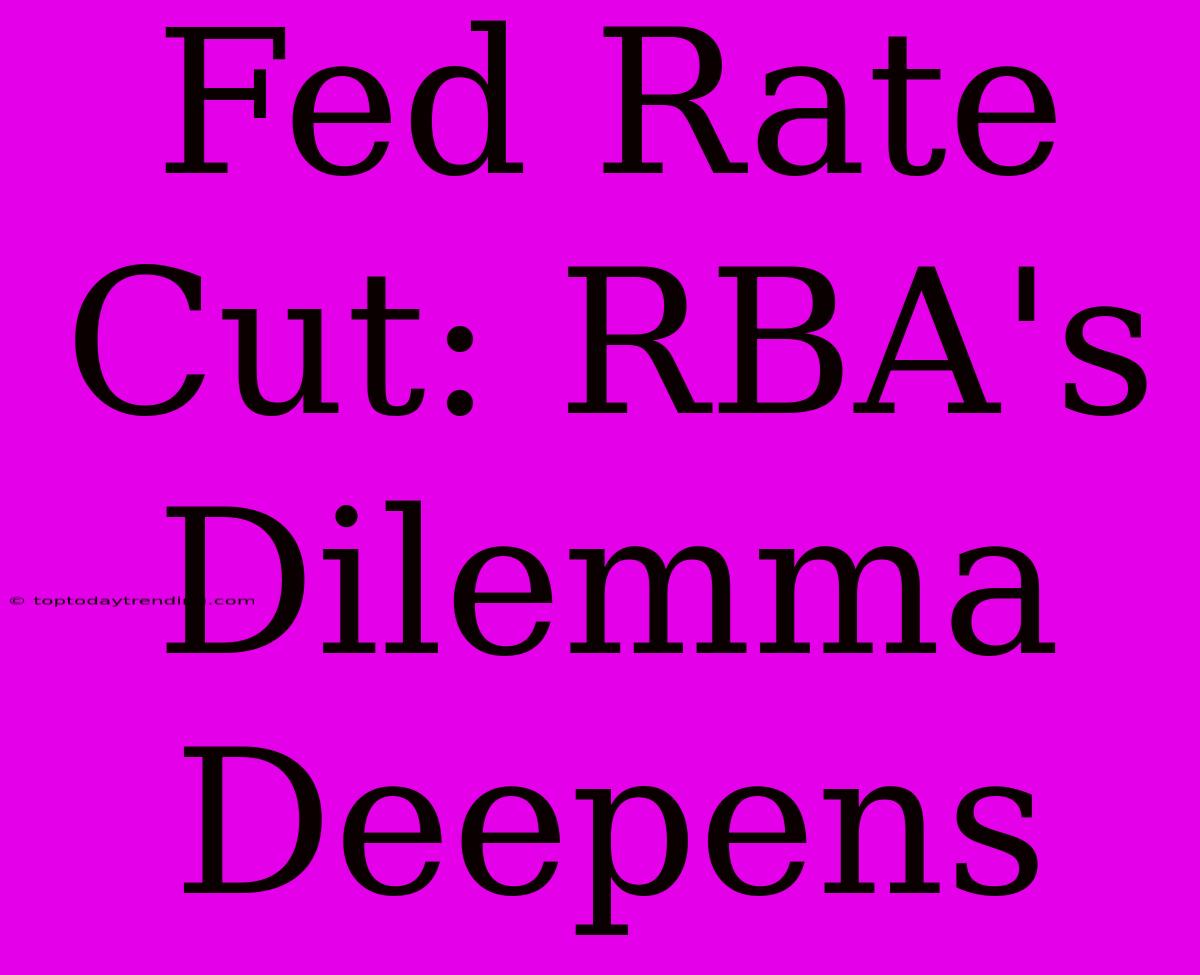Fed Rate Cut: RBA's Dilemma Deepens
The recent decision by the Federal Reserve to cut interest rates has created a new dilemma for the Reserve Bank of Australia (RBA). With the US Fed easing monetary policy, the RBA is now facing pressure to follow suit, despite the contrasting economic conditions in both countries. This article will explore the challenges the RBA is facing, analyzing the potential consequences of both rate cuts and rate hikes.
The Fed's Move and Its Implications
The US Fed's decision to cut interest rates was driven by concerns over slowing global growth and rising trade tensions. By lowering borrowing costs, the Fed aims to stimulate economic activity and combat potential recessionary pressures. However, this move has significant implications for other central banks, particularly those with economies closely linked to the US.
RBA's Balancing Act: A Look at the Australian Economy
The Australian economy is currently in a delicate state. While inflation remains within the RBA's target range, there are concerns about slowing economic growth, particularly in the housing sector. The RBA has maintained a cautious stance, keeping rates unchanged for the past several months. However, the Fed's rate cut has added another layer of complexity to the equation.
The Dilemma: Rate Cuts vs. Rate Hikes
Rate Cuts:
-
Pros:
- Stimulate Economic Growth: Lower interest rates could encourage borrowing and spending, potentially boosting economic activity.
- Reduce Debt Servicing Costs: Businesses and individuals with debt could benefit from lower interest repayments.
- Support the Housing Market: Lower rates could encourage home buyers and stimulate the housing market.
-
Cons:
- Fuel Inflation: Lower interest rates could lead to an increase in inflation, particularly if demand outpaces supply.
- Weaken the Australian Dollar: A rate cut could lead to a depreciation of the Australian dollar, potentially increasing import costs and impacting inflation.
- Encourage Excessive Borrowing: Low interest rates could lead to reckless borrowing, potentially creating financial instability.
Rate Hikes:
-
Pros:
- Control Inflation: Higher interest rates could dampen demand, helping to keep inflation in check.
- Strengthen the Australian Dollar: A rate hike could attract foreign investment, potentially strengthening the Australian dollar.
- Encourage Saving: Higher interest rates could encourage individuals to save more, leading to a more stable financial system.
-
Cons:
- Slow Economic Growth: Higher interest rates could discourage borrowing and spending, potentially slowing economic growth.
- Increase Debt Servicing Costs: Businesses and individuals with debt would face higher interest repayments.
- Impact the Housing Market: Higher rates could deter home buyers, potentially slowing the housing market.
Conclusion: A Tough Call for the RBA
The RBA faces a difficult choice. Lowering rates could stimulate the economy but also risk fueling inflation and weakening the currency. Maintaining current rates could provide some stability but may not be enough to address the slowing growth. Ultimately, the RBA's decision will be based on a careful assessment of the Australian economy and its outlook. The global economic environment, particularly the US Fed's actions, will continue to play a significant role in this decision.

